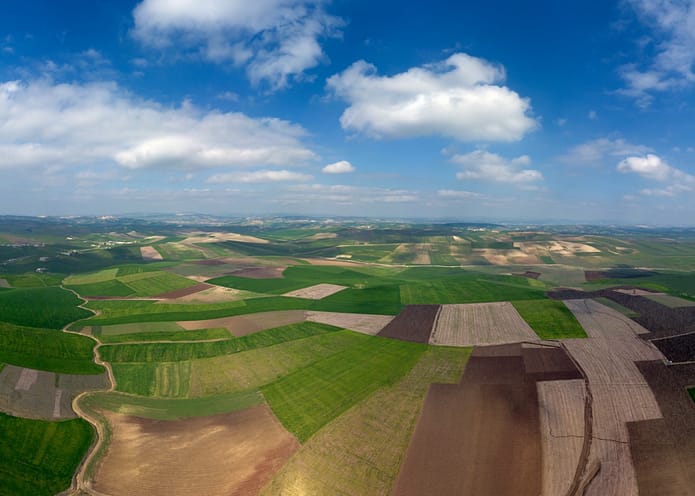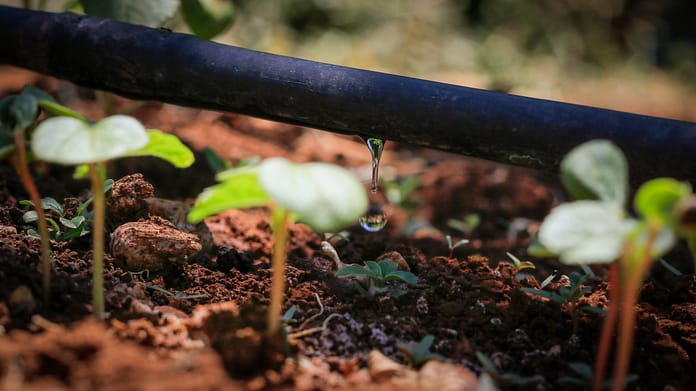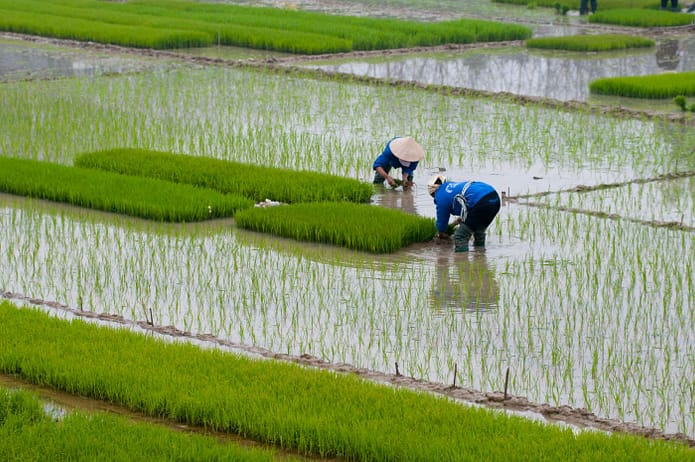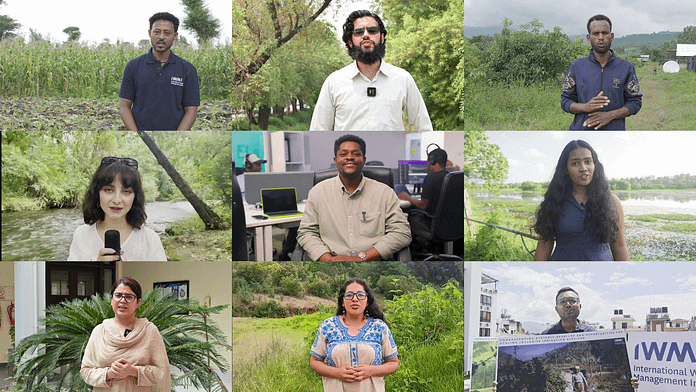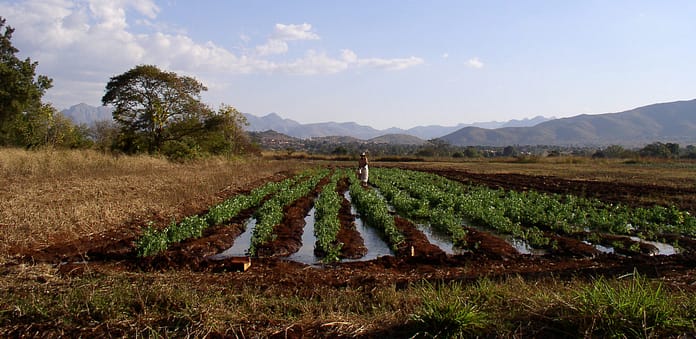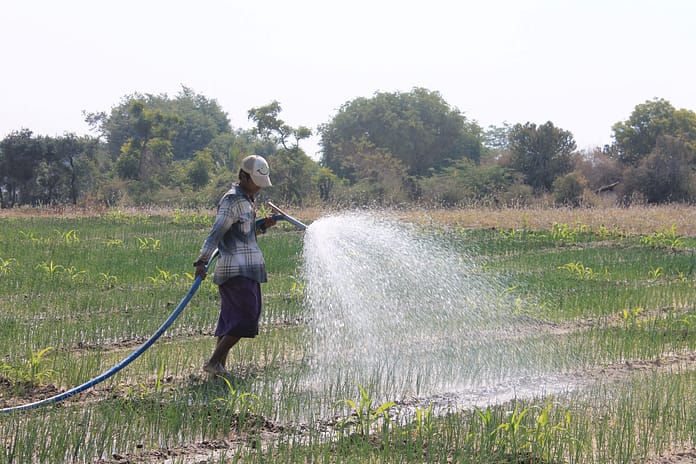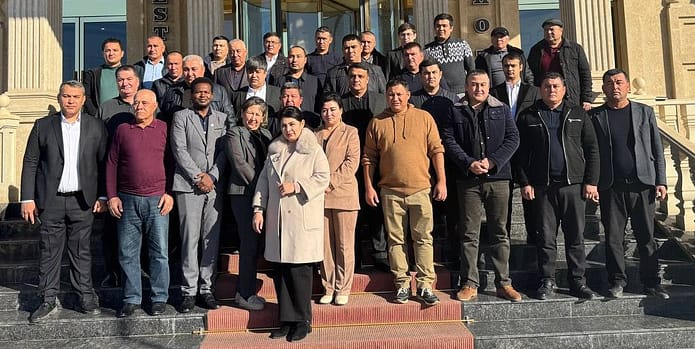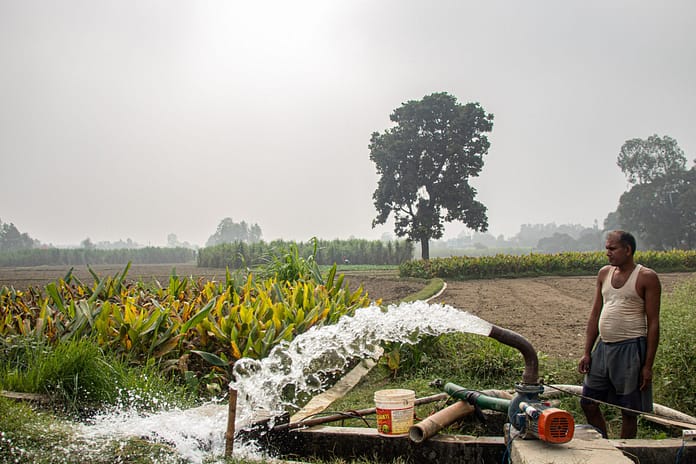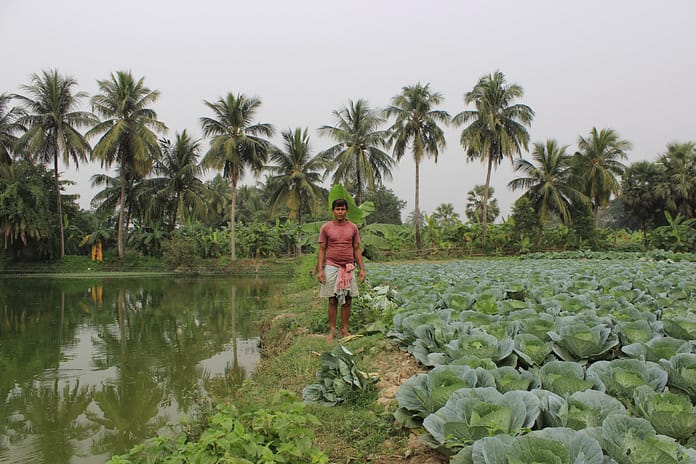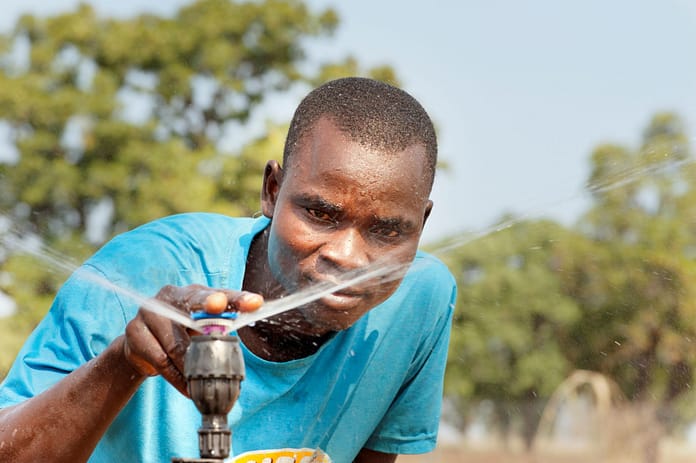
The agrifood system in Nepal encompasses an entire value chain of activities, from agricultural production and food processing, through to distribution, consumption and waste management. Despite employing more than 60% of the Nepalese population and accounting for around 24% of the country’s GDP, the agriculture sector is experiencing a growing trade deficit, with imports of 257 billion Nepalese Rupees (about $2 billion) in the fiscal year 2022/23 significantly exceeding exports of NPR 60 billion ($465 million).
This imbalance necessitates a rapid shift from traditional, subsistence farming to a more diverse, market-driven and climate-resilient agrifood system. That in turn calls for improvements in productivity, irrigated agricultural value chains, access to finance, technology, and gender and social inclusion — all within an enabling environment marked by strong institutions and evidence-based policymaking.
Irrigation plays a vital role in this transformation. It connects agriculture with water, land, ecosystems and the economy. However, Nepal’s irrigation system faces increasing obstacles — including seasonal water variability, insufficient infrastructure and climatic risks — leading to inconsistent services and reduced agricultural productivity.
National policy frameworks, such as the Agriculture Development Strategy (ADS) (2015–2035), the Irrigation Master Plan (updated in 2024) and the 16th Five-Year Plan, prioritize year-round irrigation, food and nutrition security, and climate resilience. Yet, because of fragmented planning and inadequate coordination, progress remains slow. Addressing these challenges requires strengthening cross-sectoral collaboration and coherence between irrigation and agricultural planning, which can enhance agricultural productivity, improve livelihoods and contribute to socio-economic growth.
During a seminar in Kathmandu in May 2025, government representatives and researchers examined some key strategies to achieve sustainable agrifood system transformation in Nepal. Supported by the CGIAR Policy Innovations and Scaling for Impact programs, the seminar was jointly organized by the Department of Water Resources and Irrigation (DWRI), the International Water Management Institute (IWMI), the Nepal National Committee on Irrigation and Drainage (NENCID), and the Centre for Applied Research and Development at the Institute of Engineering (CARD), Tribhuvan University.


The main take-aways are explored below.
Collaboration between the agriculture and irrigation sectors is critical for agrifood transformation
To ensure meaningful progress in food security and agricultural transformation, silos that currently exist between the irrigation and agriculture sectors in Nepal must be broken down. However, the lack of a mechanism for regular dialogue, shared learning and joint problem solving between stakeholders from both sectors presents major challenges.
The Government’s Rani Jamara Kulariya Irrigation Project has emerged as a successful example of sectoral synergy. Here, integrated planning, joint monitoring and coordinated implementation between sectors have resulted in improved water use efficiency and agricultural productivity. It also shows that a common vision and shared sense of responsibility can foster coordinated action and promote meaningful impact across sectors.
Strengthening institutions across scales can leverage investment opportunities
Mobilizing plans into action and attracting meaningful investment relies on institutional clarity, coordination and capacity — from the federal government down to local levels. Bimala Rai Paudyal, former honorable National Assembly Member, Federal Parliament of Nepal, emphasized that federal government cannot deliver services alone and that empowering local institutions is crucial. This requires joint planning and accountability at the grassroots level.
There is also the potential to establish an operational institution that enables regular exchange of knowledge and experience, and coordinated planning between the various institutions that make up the irrigation and agricultural sectors. A multi-stakeholder platform at all levels is essential to strengthen effective coordinated planning and investment.
Project-level success must be scaled to program-level transformation
Nepal has seen encouraging results from integrated approaches in projects like the Rani Jamara Kulariya Irrigation Project and the Irrigation and Water Resources Management Project. However, despite these achievements, outputs have largely remained confined within the boundaries of individual projects.
There is a clear gap in translating these successful models into broader, institutionalized frameworks. Moving beyond isolated successes and replicating effective models requires coherent policies, national programs and institutional reforms.
Research and innovation can support the testing and replication of localized solutions
Nepal’s diverse geography, farming systems and variation in water availability call for adaptive, local strategies rather than one-size-fits-all models. Research and innovation can help identify what works, where and for whom.
Ganesh Raj Joshi, former secretary of the Ministry of Agriculture and Livestock Development, noted that there is an inadequate assessment of different technologies and stressed that institutions such as the Department of Water Resources and Irrigation, the Department of Agriculture and the Nepal Agricultural Research Council must come together to jointly lead this effort. Collaboration across research and implementing agencies can bridge the gap between innovation and practice, ensuring that innovations are not only tested but tailored to local contexts and scaled up.
Placing women and smallholder farmers at the center of change
Any support for the agrifood system must be aligned with local realities. For example, investments should be guided by locally grounded solutions that are affordable, practical and scalable at the community level.
Sarita Dawadi, Secretary at the Ministry of Energy, Water Resources and Irrigation, noted that “farmers, especially smallholders, women and marginalized communities, must be placed at the center of irrigation planning and implementation, as they often face barriers to water access.”
Empowering women and smallholders is not only a matter of equity; it is essential for building resilient, productive and sustainable agrifood systems.
An actionable pathway for progress
Transforming the agrifood system requires more than just sectoral reforms. Inclusive solutions, committed collective actions and a common vision are also needed. Nepal can shift towards a more productive and resilient future by aligning agriculture, irrigation, innovation and institutions.
IWMI is advancing this agenda in Nepal through the CGIAR Policy Innovations and Scaling for Impact programs, while continuing the collaboration with governments, civil society organizations and development partners to ensure that the takeaways from this seminar are turned into actionable measures to progress that transform Nepal’s agricultural and irrigation sectors.


